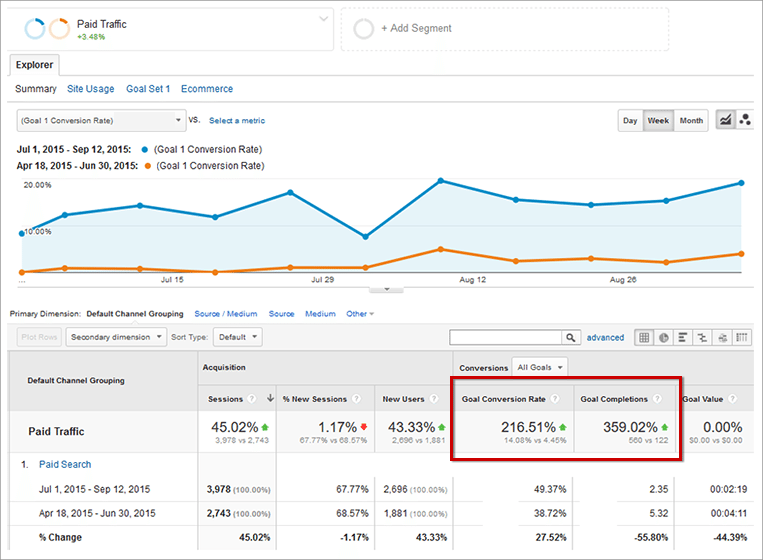SEM stands for “Search Engine Marketing.” SEM is a marketing strategy used to improve a site’s visibility in search engine results pages (SERP). SEM is used to improve click-through rates (CTRs), which in turn improves website traffic. SEM can be used to promote a site across all search engines, including Google and Yahoo!, or it can be targeted specifically at one or more of these engines.
SEM is a marketing strategy that uses search engine optimization (SEO) to increase the visibility and ranking of a website on search engines. The goal is to attract potential customers by positioning the business as the best option for the desired search query. SEM can be used to target web users based on their location, interests, or behavior. However, businesses must carefully consider their strategy before investing in SEM; not all approaches are effective.
SEM, or search engine marketing, is a powerful marketing tool that businesses can use to reach potential customers. However, businesses need to find the right strategy for their needs in order to maximize SEM effectiveness. Some tips for optimizing SEM include creating effective content, targeting the right audience, and using relevant keywords.
Determining Goals

When it comes to SEM, there are a few different things you need to consider before diving in. You need to determine your goals and what you hope to achieve with your SEM campaign. Once you have those goals set, you can begin developing a strategy that will help you reach them.
There are many different facets of SEM, so it’s important to tailor your strategy to fit your business. You need to consider the type of product or service you offer, your target market, and how much money you’re willing to spend on marketing. There is no one-size-fits-all approach to SEM; every business needs a unique strategy that meets its specific needs.
There are many different SEM tactics that businesses can choose from, such as search engine optimization (SEO), paid search advertising, and social media marketing. SEO is a long-term strategy that helps businesses rank higher in search engine results pages (SERPs), while paid search advertising allows businesses to place ads at the top of SERPs for specific keywords or phrases.
SEM can be a great way to reach new customers and grow your business, but it’s important to approach it in the right way.
Choosing a Strategy

When it comes to SEM, there are a lot of options available for businesses to choose from. But, not every option is the right fit for every business. So, how do you choose the right SEM strategy for your business?
The first step is to figure out what your goals are. What are you trying to achieve with your marketing efforts? Are you looking to generate more website traffic? Increase leads or sales? Boost brand awareness? Once you know your goals, you can then start to explore the different SEM strategies that will help you achieve them.
If your goal is to generate more website traffic, SEO is a good option. SEO is a long-term strategy that helps your website rank higher in search engine results pages (SERPs), resulting in more traffic. However, SEO can take time to produce results, so be patient.
Another thing to consider is your budget. How much money can you afford to spend on marketing each month? Some strategies are more expensive than others, so make sure you can afford the one you choose.
Finally, think about who your target audience is. Not every strategy will be a good fit for every type of business.
Executing the Strategy
When you’re executing your search engine marketing (SEM) strategy, there are a few key things to keep in mind. First, make sure you have a clear goal in mind for what you want to achieve with your campaign. Are you looking to increase brand awareness, drive traffic to your website, or convert leads? Knowing this will help you determine which tactics to use and how best to allocate your budget.
Second, always test and measure your results. Try different approaches and track the results so that you can see what’s working and what’s not. This will help you fine-tune your strategy over time and ensure that you’re getting the most out of your investment.
Finally, be patient. SEM is not a quick fix; it takes time and effort to see results.
Evaluating Results

Small and medium-sized businesses (SMBs) often struggle to allocate the necessary resources to develop and execute a successful SEM strategy. After all, there are only so many hours in the day, and competing priorities often take precedence. So, how can you be sure that SEM is worth your time and investment?
The first step is to evaluate your results. What are your current web traffic levels and where does that traffic come from? What are your current conversion rates and what’s driving those conversions? Once you have a good understanding of your existing situation, you can start to formulate a plan for improvement.
SEM can be an extremely effective way to drive traffic and conversions, but it’s important to remember that it’s not a one-size-fits-all solution. The key is to tailor your approach based on your specific business goals and targets.
In conclusion, SEM is an important part of any online marketing campaign. It is a versatile tool that can be used to achieve a variety of goals. As the technology continues to evolve, SEM will become even more important. Businesses that want to stay ahead of the curve should invest in SEM and learn how to use it to its fullest potential.



